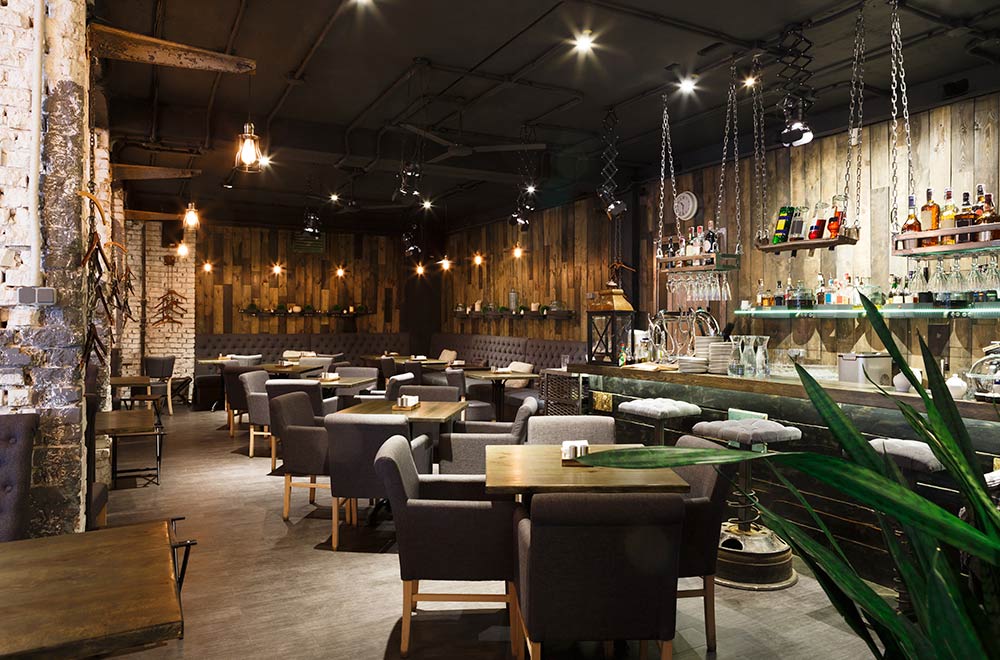Savor Genuine Asian Food With a Pan-Asian Spin for a Culinary Experience
Starting a cooking trip through genuine Oriental cuisine, boosted with a Pan-Asian spin, offers an unique opportunity to check out the abundant tapestry of tastes that specify the region's varied culinary practices. This experience welcomes you to enjoy the beautiful balance of tastes-- wonderful, salted, spicy, and sour-- harmonized by aromatic natural herbs and seasonings. Imagine the innovative blend of Thai curry and ramen or the unforeseen joy of sushi burritos. As you ponder these attracting recipes, take into consideration the social stories and historic influences that form them, each bite supplying a tale waiting to be found.

Discovering Pan-Asian Flavors
In the world of global gastronomy, Pan-Asian food attracts attention for its exceptional diversity and the harmonious interaction of flavors from different Asian societies. This cooking method commemorates the special active ingredients and rich traditions located throughout the continent, producing a tapestry of preferences that is both appealing and rewarding. Trick to Pan-Asian food is its ability to stabilize different tastes-- wonderful, salted, spicy, and sour-- while highlighting the freshness and high quality of each ingredient.
From the umami-rich soy sauce of Japan to the intense chili peppers of Thailand, Pan-Asian cuisine provides a comprehensive palette of tastes. These components are commonly combined in creative ways, boosting recipes with layers of complexity. For instance, the use of aromatic herbs such as lemongrass and cilantro, typical in Vietnamese and Thai cuisine, adds a revitalizing brightness to recipes, while the consolidation of coconut milk supplies a luscious, abundant texture.
The focus on fresh fruit and vegetables and fragrant seasonings guarantees that each dish is not only a feast for the taste but additionally for the detects. Pan-Asian food welcomes restaurants to start a cooking trip, discovering the substantial and varied landscapes of Oriental gastronomy with every bite.
Combination Meals to Try
While Pan-Asian food is celebrated for its traditional tastes, the contemporary culinary landscape is progressively embracing blend meals that blend these classic components with influences from various other areas. This cutting-edge approach not just honors the rich heritage of Oriental cookeries but likewise introduces unique preference experiences that appeal to contemporary palates.
An archetype of such a combination recipe is the Korean-Mexican taco, where marinaded bulgogi beef is wrapped in a warm tortilla, topped with kimchi and a hot gochujang-infused salsa. This mix weds the bold, savory flavors of Korea with the vivid, fresh elements of Mexican food. Similarly, sushi burritos have actually obtained appeal, joining together the fragile artistry of Japanese sushi with the hearty, hand-held ease of a burrito, typically featuring combination active ingredients like tempura shrimp and avocado with a drizzle of wasabi mayo.
Another noteworthy meal is Thai curry ramen, which instills the creamy, aromatic flavors of Thai curry into the calming broth of conventional Japanese ramen, creating a harmonious blend that tantalizes the senses. These blend recipes extend beyond simple uniqueness; they stand for a culinary dialogue between cultures, urging expedition and development on the planet of Pan-Asian food.
Essential Ingredients and Flavors
To genuinely appreciate Pan-Asian cuisine, one must recognize the vital ingredients and spices that create its structure. This diverse culinary design attracts from an abundant tapestry of Eastern practices, utilizing an unified blend of appearances and flavors.
Aromatic elements are essential, with ginger, lemongrass, and garlic being ubiquitous across numerous Pan-Asian dishes. These ingredients give an aromatic base that improves the complexity of flavors. Seasonings such as star anise, cardamom, and cinnamon present heat and character, echoing influences from regions like China and India.

Food Preparation Methods and Tips
Mastering the art of Pan-Asian cuisine needs knowledge with its distinct cooking strategies, each adding to the dynamic tapestry of flavors this cooking practice is commemorated for. Central to these methods is the stir-fry, a rapid food preparation technique that maintains the nutritional integrity and dazzling colors of active ingredients. Making use of a wok, the stir-fry technique permits also warmth distribution, necessary for achieving the characteristic texture and taste balance of Pan-Asian recipes.
Another fundamental strategy is steaming, particularly common in Chinese cuisine. This mild approach keeps the natural flavors and nutrients of ingredients, making it perfect for fish and shellfish and vegetables. Dumplings, a cherished staple, often take advantage of steaming, leading to soft, delicious textures.
Grilling, additionally integral, gives great smoky midsts to recipes such as Korean bulgogi or Japanese yakitori (best asian restaurant Islamabad). This method frequently involves seasoning components, allowing flavors to penetrate deeply prior to cooking over an open fire or hot plate
Finally, mastering the art of balancing tastes-- wonderful, sour, salted, bitter, and umami-- is vital. Effectively layering these components can elevate a dish from average to remarkable, providing a complex and satisfying culinary experience that symbolizes the essence of Pan-Asian food.
Dining Experiences Worldwide
Across the world, Pan-Asian cuisine offers an unrivaled dining experience, celebrated for its abundant tapestry of tastes and dynamic discussions. This culinary sensation has transcended social limits, catching the hearts see here and palates of food fanatics worldwide. In worldwide cities fresh York, London, and Sydney, Pan-Asian dining establishments work as fusions where cooking practices from Thailand, Japan, China, and past merge, try these out providing diners with an eclectic mix of dishes that highlight the area's variety.
The global allure of Pan-Asian cuisine hinges on its capability to offer both authenticity and innovation. Chefs masterfully marry conventional ingredients such as lemongrass, soy sauce, and miso with contemporary strategies, causing recipes that are both refreshingly brand-new and familiar. This blend permits diners to start a culinary journey that values heritage while accepting modernity.
Additionally, dining experiences are boosted through attentively made settings that show the values of Pan-Asian looks. From minimal Japanese-inspired interiors to lively Thai-themed spaces, each restaurant uses a special atmosphere that complements the culinary offerings. As a result, patrons are not merely consuming a dish but partaking in a cultural experience, making Pan-Asian eating a really international sensation.
Verdict
The exploration of Pan-Asian food provides a profound understanding of the detailed interplay of tastes and cooking practices across Asia. By welcoming blend recipes such as Thai curry ramen and sushi burritos, the culinary journey not just highlights the flexibility of conventional components yet also showcases cutting-edge modern strategies. This gastronomic adventure, improved by cooking techniques and necessary spices, supplies a distinct chance to appreciate the social diversity and cooking creativity that specify Pan-Asian food on an international scale.
Embarking on a culinary trip through authentic Eastern cuisine, boosted with a Pan-Asian spin, supplies an one-of-a-kind opportunity to check out the rich tapestry of tastes that define the area's diverse cooking traditions.In the world of international gastronomy, Pan-Asian cuisine stands out for its amazing variety and the harmonious interaction of tastes from numerous Eastern cultures. Key to Pan-Asian cuisine is its capacity to balance contrasting flavors-- pleasant, salty, spicy, and sour-- while highlighting the quality and top quality of each active ingredient.
